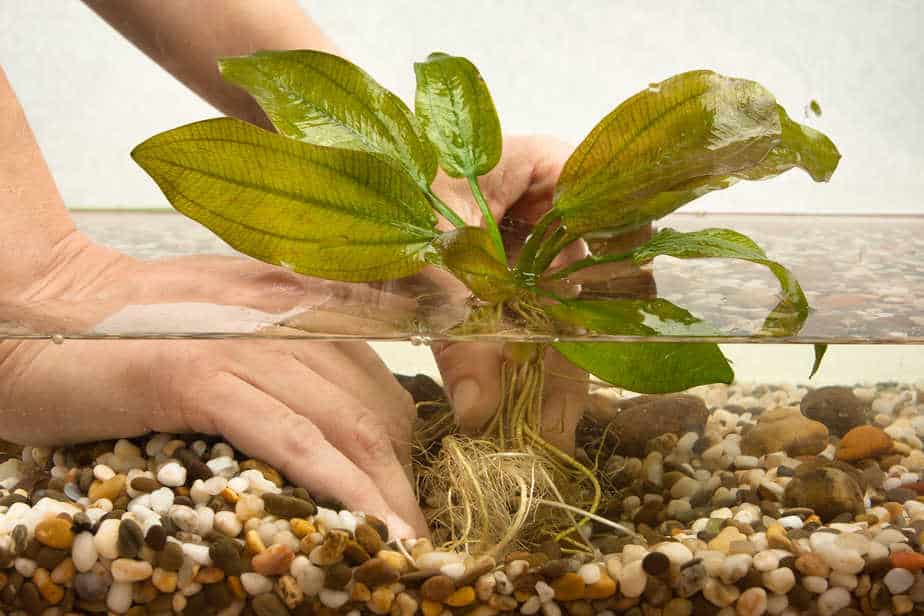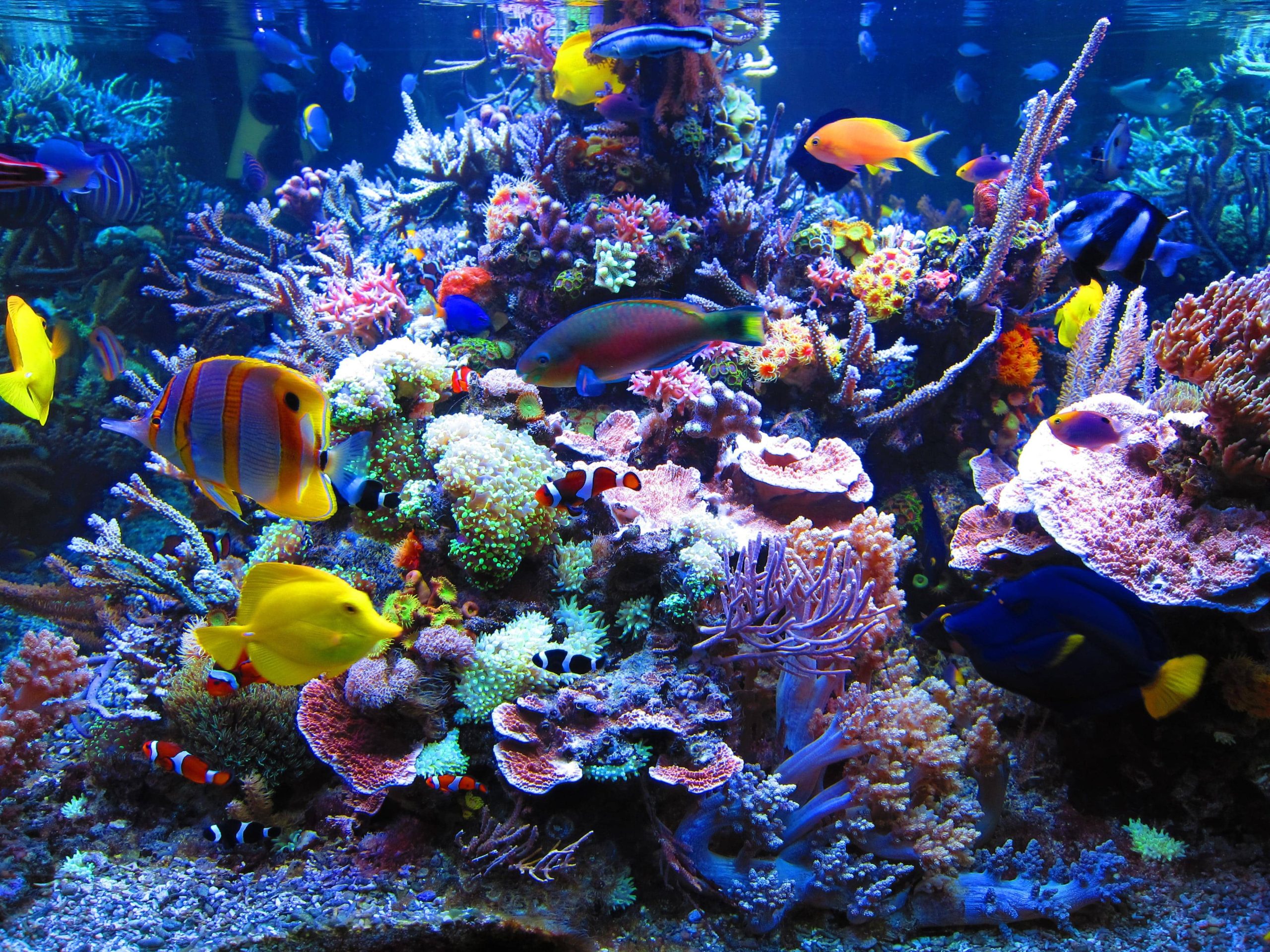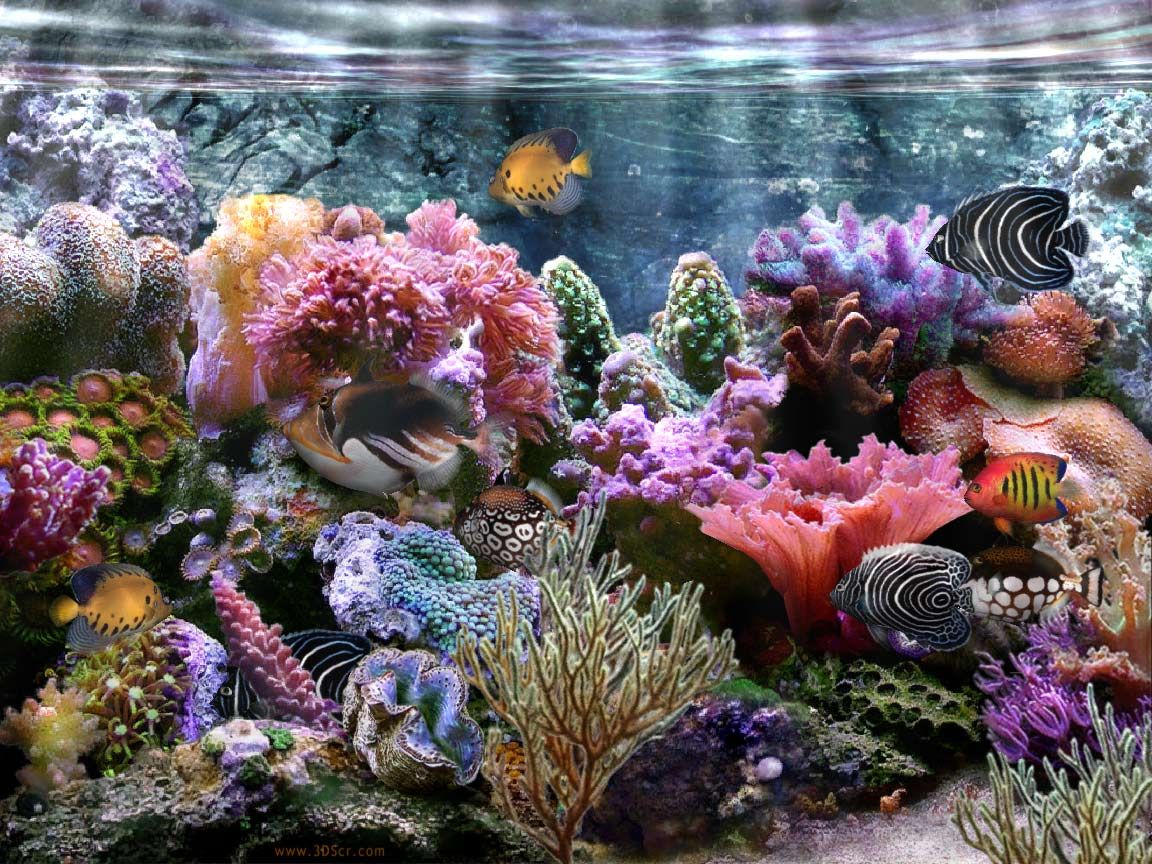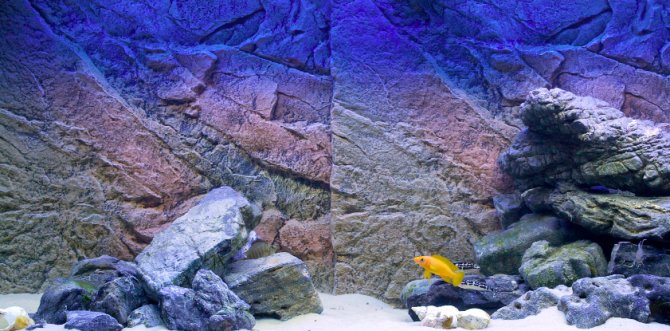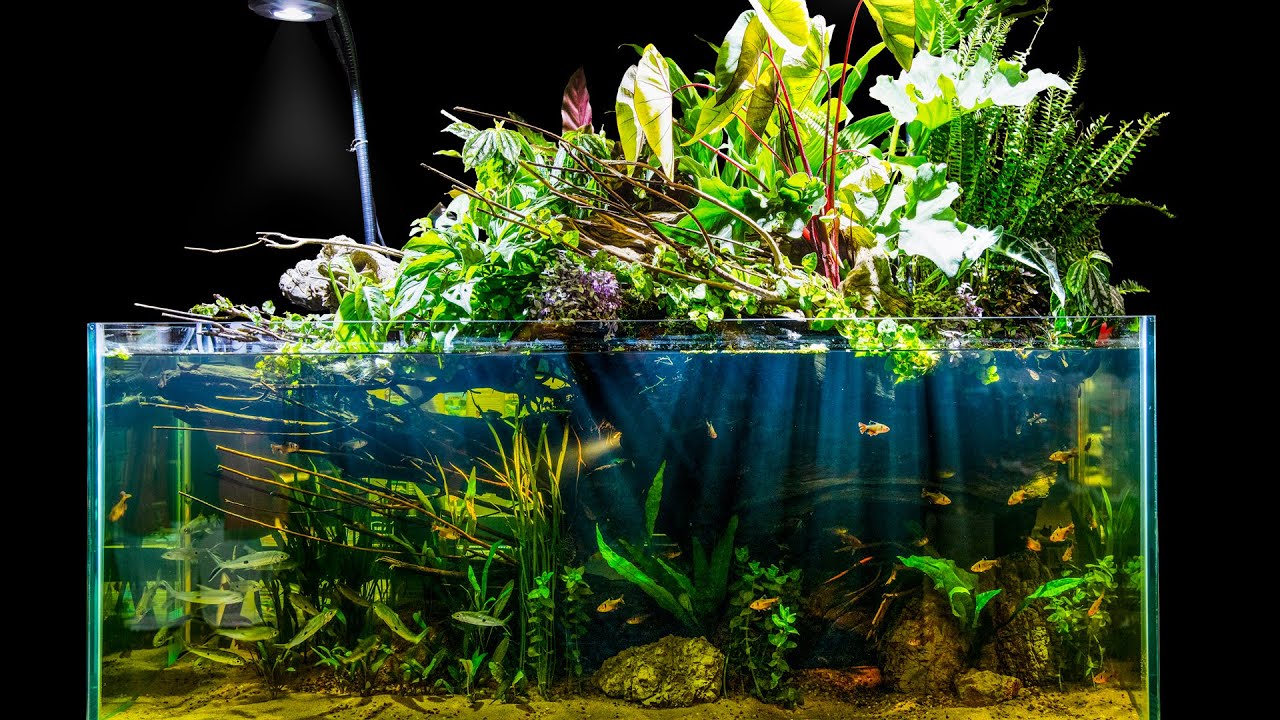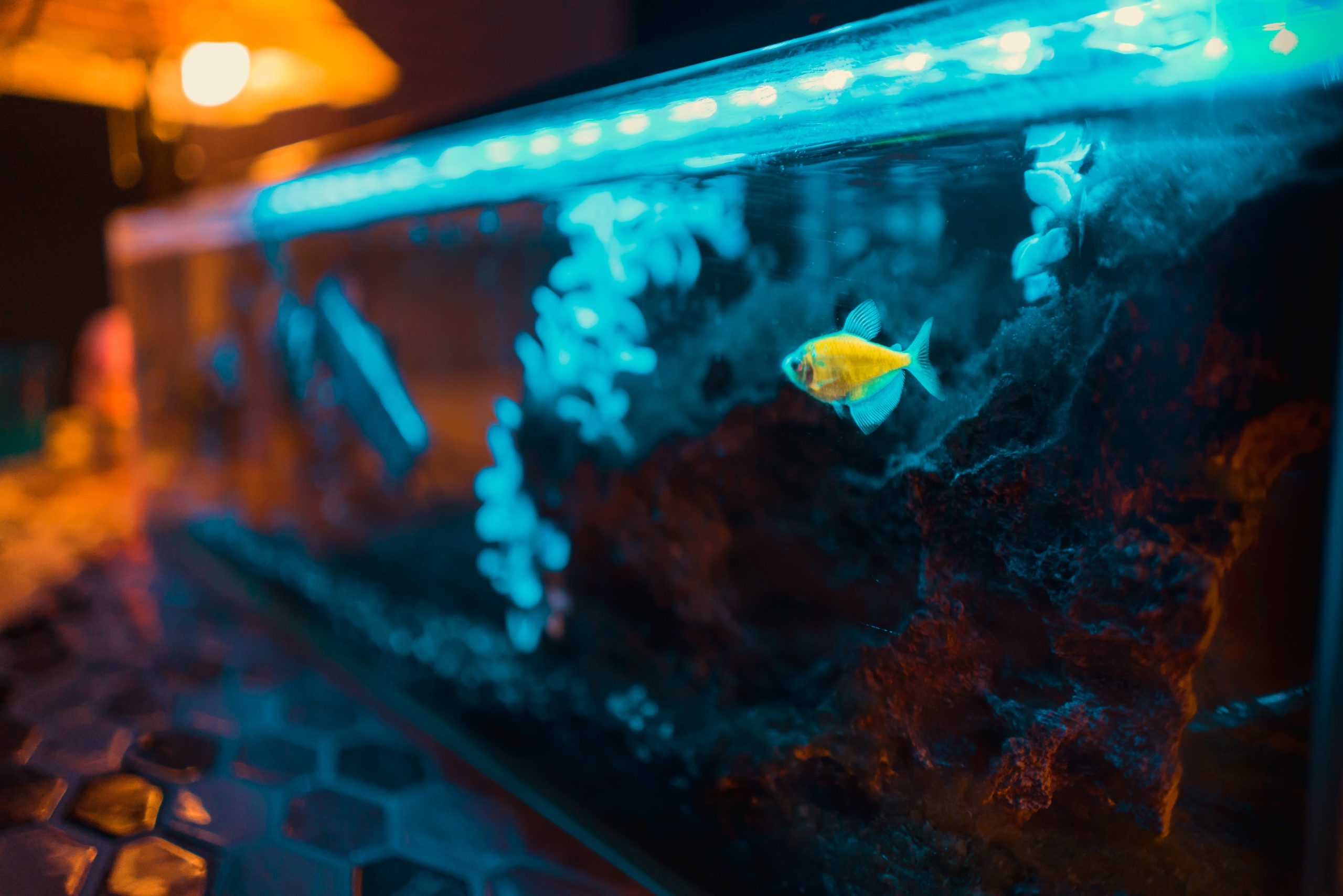Live aquarium plants are an excellent addition to your aquarium. They enhance the aesthetic beauty and, at the same time, keep the water condition pristine. Live plants are beneficial in many ways. They absorb toxic matters like co2, ammonia, nitrates, and oxygenate the water, providing a healthy condition for fish.
When thinking about planting live aquarium plants, the substrate is a vital consideration. Especially beginners ponder about the difficulties of growing live plants. Some people think having a particular type of planting sand or soil in the aquarium can add extra hassles.
Gravels indeed are the easiest type of substrate to maintain. And no worries, you can still grow plants in the aquarium, keeping a gravel substrate. In this article, I’ll talk about how to grow aquarium plants in gravel.
Is It Possible to Grow Aquarium Plants in Gravel?
Yes, it is possible to grow aquarium plants in gravel. Aquarium plants need nutrients to grow and survive. Rooted plants absorb nutrients from the substrate through their roots and from the water by leaves and stems.
There are many kinds of aquatic plants whose primary means to soak up nutrients are the leaves, and so the substrate does not play a vital role in their survival.
Many aquarium plants (like Monosolenium tenerum) hold the substrate with rhizoids to secure themselves, not absorb nutrients from it. So the type of substrate does not at all bother them.
Tips For Growing Aquarium Plants in Gravel
There is no magic to keep live plants and a gravel substrate concurrently. Lots of attractive aquarium plants can flourish in the gravel. All you need to do is ensure their proper nutrition and fertilization. Keep in mind that water is the primary source of nutrients when you are growing plants in gravel. So a nutrient-rich and favorable water condition is the essential requirement.
- Choose the right plants that can grow in gravel substrate. Not all plants might be suitable for this purpose. So the plant selection is the first concern in this case. I’ve discussed the top five plants perfect for keeping with gravel substrate in the next sections.
- Use gravels of 5-10 mm dia. The gravel of this size is ideal for most kinds of aquarium plants to grow. Plants hold the rocks with roots and rhizoids to secure themselves. Too big or small gravels make it inconvenient.
- Adding nutritional supplements is vital for the growth of aquarium plants. Liquid fertilizer is a perfect option for plants to grow in gravel, as they take most of their food from the water through leaves.
- Consider co2 supplementation as co2 is extremely important for plants’ growth. Plants produce sugar and oxygen by the photosynthesis process, and they need light and co2 for it.
- Ensure proper lighting, and it is the key to have thriving aquarium plants. Different plants have different levels for lighting requirements. Know your plant’s needs and provide accordingly.
Top Aquarium Plants to Grow in Gravel
We’ve picked the top five aquarium plants here. They are the easiest to grow in the gravel and visually very appealing.
Java Moss
Java Moss is a super hardy aquarium plant that is almost impossible to kill. It doesn’t have roots, but rhizoids act as grabbing organs for them. They attach themselves to other surfaces with rhizoids.
Planting Java Moss is pretty simple. Cut the plants into small pieces and secure them somewhere inside the tank. They start to develop within a week to form colonies.
Java Moss doesn’t care about the substrate. They collect nutrients from the water. So keeping a healthy water condition is crucial for their growth. They are low light requiring plants, and co2 supplementation is not essential. Adding liquid fertilizer can boost up their growth.
Anubias
Anubias is hard aquarium plant species that originated from West Africa. They are lovely-looking plants with thick, dark-green leaves and stems. Anubias plants are flexible about the substrate and even can grow on driftwood.
When planting Anubias in gravel, place each piece of plant two inches apart. Slightly bury their roots but not too deep. Within a few days, roots become strong enough to hold them secured in place.
Anubias is a slow-growing plant species and easier to maintain. They absorb nutrients mostly from the water. Nutrient supplementation with liquid fertilizer is quite useful for them. co2 dosing encourages them flourishing but not mandatory.
Amazon Sword
Amazon swords are native to Central America. They are fast-growing aquarium plants that grow long to 16 inches and can oxygenate the water very well.
Amazon Sword does well in gravel substrate. Planting them is a straightforward task. Make a hole in the substrate and bury the roots in 2.5 inches depth, keeping the crown of the root exposed.
Amazon Swords are bushy plants and need sufficient space to grow. You have to ensure mineral-enriched water for them, and 11-12 hours of lighting per day is essential for their growth. co2 supplementation is optional as naturally, they are aggressive growers. A regular water change is recommended for maintaining healthy Amazon swords.
Ludwigia Repens
Ludwigia Repens is a beautiful looking coloring aquarium plant that can grow in gravel substrate. This plant is native to America and Mexico. Leaves of Ludwigia Repens can be deep green to red.
Planting and caring for this plant is relatively easy. You can stem the branches in the substrate, and within a few days, it will start to propagate.
Iron-rich fertilizers are ideal for Ludwigia Repens. co2 addition is essential to get the red coloration of the leaves.
Monosolenium Tenerum
Monosolenium tenerum have been surviving on the earth for 470 million years. They are survivors, extremely hardy, and can grow anywhere you put them.
They are rootless plants having rhizoids, and so the substrate type doesn’t bother them at all. Unfortunately, they don’t get attached to anything firmly, and that makes them a bit brittle.
For planting Monosolenium tenerum, you have to cut the mother plant into pieces and place it on the substrate. You’ll need to secure them in the place with something like strings. They have spores and within a few days start spreading using them.
They primarily collect food from the water, and so nutrient-rich water is essential. co2 supplementation is optional for Monosolenium tenerum, and they don’t require very high light.
Planting in Pots – an Alternative Method
You can place potted aquarium plants in your aquarium. This technique is quite popular, and you don’t have to think about the substrate type for this method. But it will limit the plant growth as small pots restrict the spreading of roots.
Still, planting in pots is convenient in many ways. They can easily be moved around during cleaning or redecoration. Most importantly, you can use any substrate type, pebbles, rocks, sand, or even no substrate; it doesn’t matter.
FAQs
Do aquarium plants grow better in sand or gravel?
Aquarium plants grow better in planting soils as they are full of nutrients to encourage them to thrive. Sand or gravel cannot provide nutrients for the plants. Still, many aquarium plants can grow both in rock and sand because plants can collect their food from the water.
Planting in the gravel (with 5-10 mm dia) is relatively more manageable as plants can root in it quickly and grab to secure themselves. Sand neither provides food nor the convenience to fix the roots for plants.
Can I mix gravel and plant substrate?
Yes, you can. Many planted tank owners use this combination, keeping planting soil at the bottom layer and gravel at the top. The benefit is, this arrangement enhances the beauty of the aquarium and prevents the tank water from becoming cloudy. But it makes the cleaning process relatively tricky.
Should you gravel vacuum a planted tank?
The substrate is the house of beneficial bacteria that establish a nitrogen cycle in an aquarium. Thorough cleaning of the gravel can destroy the bacteria colony. Still, sometimes you’ll have to partially gravel vacuum to prevent ammonia accumulation. Waste matters deposit at the bottom and decompose to acutely toxic ammonia.
But in a planted tank, live plants absorb ammonia as a nutrient, hence reducing ammonia accumulation. So, I’ll say it is not necessary to gravel vacuum a planted tank. Still, if you find a trace of ammonia or nitrite in the water, you have to do it, and that is a situation-based decision.
Conclusion
To grow aquarium plants in gravel is not as challenging as many people think. It requires no unique technique. For successful aquarium plant keeping, you need to follow some fundamental strategies.
Many popular aquarium plants grow perfectly in gravel substrates. You need to maintain healthy and nutrient-rich aquarium water. Plants produce a large portion of their required energy from photosynthesis, which requires only light and co2. Ensure these two elements are sufficiently available.
Apart from providing necessary nutrients and light, the rest maintenance work for aquarium plants is simple. You need to trim the plants occasionally to keep them in good shape and perform regular cleaning tasks to remove dead plant matters from the aquarium.

